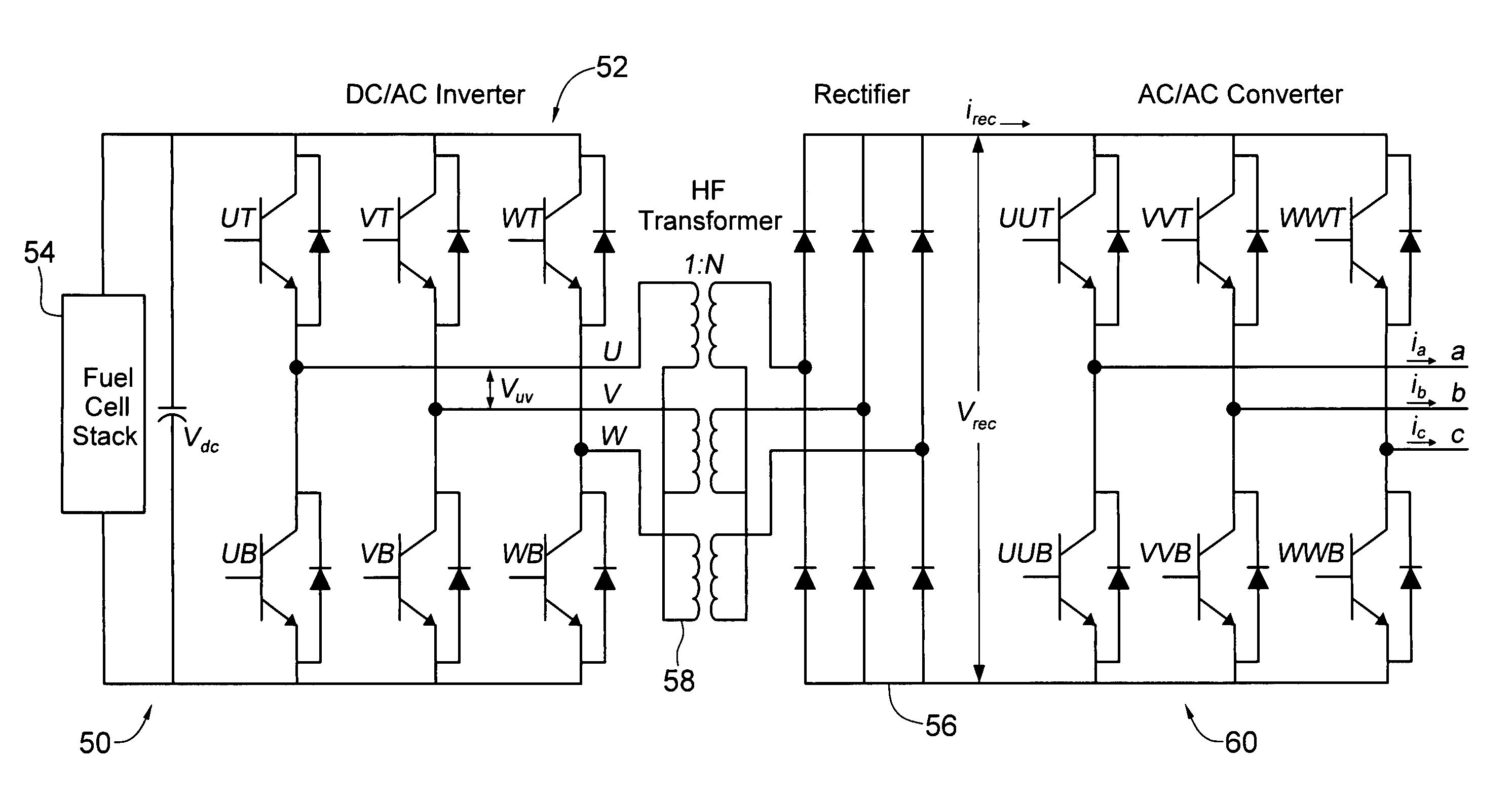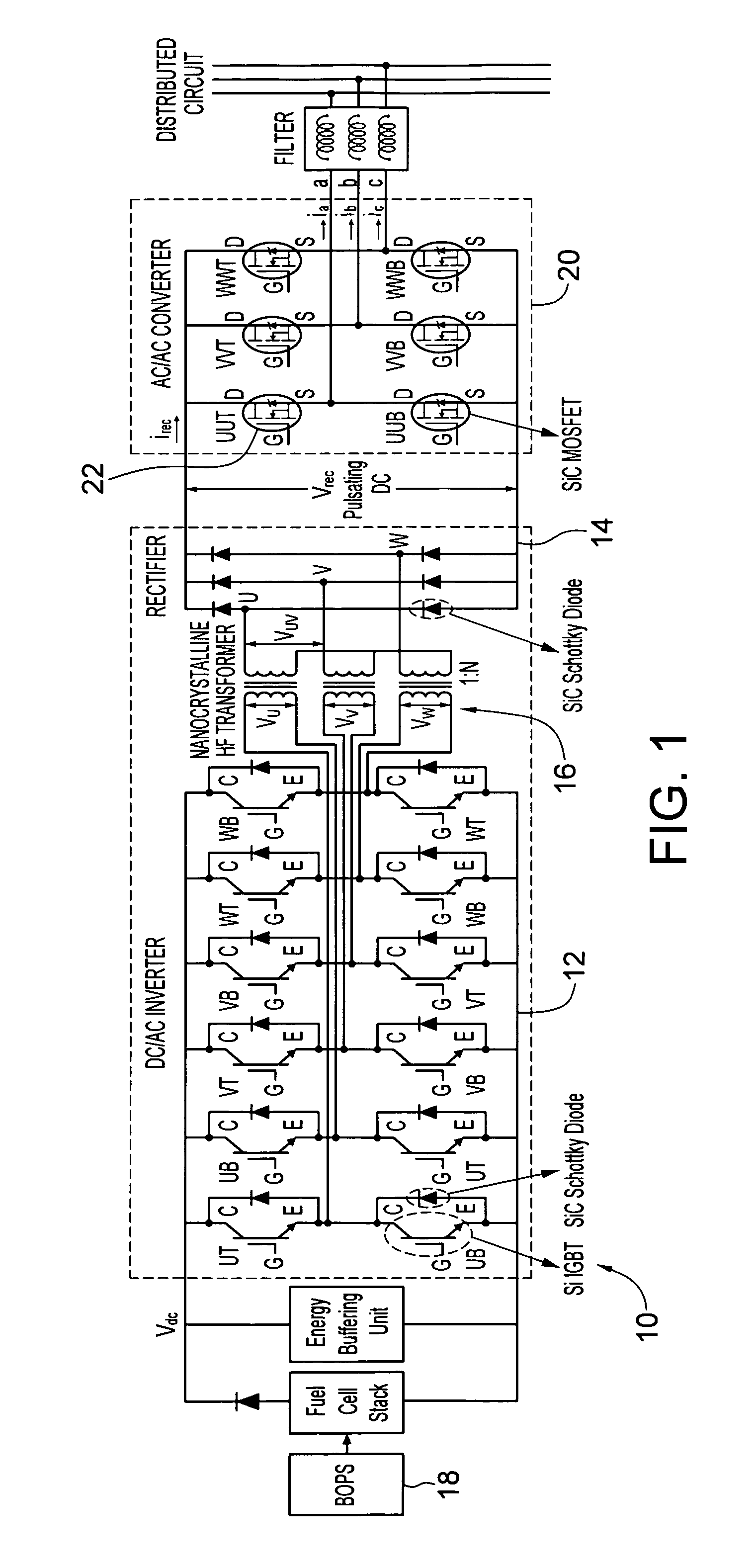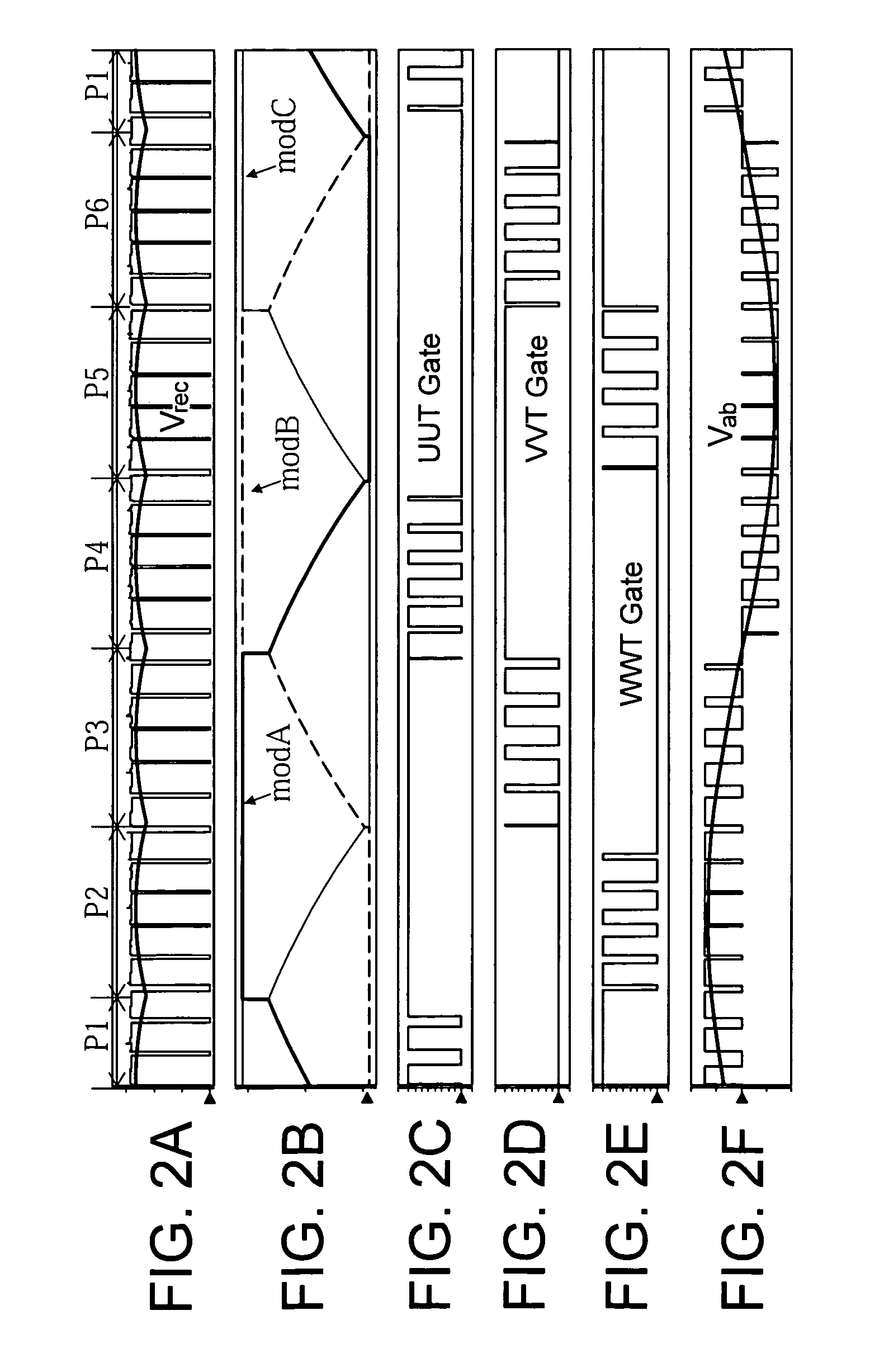Multiphase Converter Apparatus and Method
a multi-phase converter and apparatus technology, applied in the direction of electric variable regulation, process and machine control, instruments, etc., can solve the problems of difficulty in installation, repair, and power conversion efficiency and effectiveness, and achieve the effect of reducing the cost of installation, repair and maintenan
- Summary
- Abstract
- Description
- Claims
- Application Information
AI Technical Summary
Problems solved by technology
Method used
Image
Examples
case 1 (
[0099ωt ε[π / 6, π / 3+φ]⊂P2, FIG. 15A: irec switches from −ib to ia when WT turns off, and −ib>ia>0. With their body diodes conduct, switches Q1-Q4 have no effect on operation. The converter has eleven operating modes within each half switching cycle as illustrated in FIG. 15A. The analysis starts at t1 with zero Vrec, irec and itr. Load currents ia, ib, and ic are circulating among three legs of Bridge III before t1.
[0100]Mode 1 (t1-t2): Switch K2 turns off with zero-current at t1; switches WT and WB of Bridge III commutate under ZVS. Both voltage Vpri and Vrec are zeros.
[0101]Mode 2 (t2-t3): K1 turns on at t2. Because of the existence of leakage inductance, the transformer current itr can only rise at a finite rate determined by Vdc / (N·Lk). Therefore, the turn-on loss of K1 is small although it is not strictly a zero-current switching.
[0102]Mode 3 (t3-t4): itr reaches −ib at t3. After that, the transformer leakage inductance resonates with the parasitic capacitance. Vrec increases ra...
case 2 (ωt ′ ε [ π / 2 , π / 3 + φ ] ⊂p3 , fig.15b)
[0116]Case 2 (ωt′ε[π / 2, π / 3+φ]⊂P3, FIG. 15B): In P3, u(t)−w(t) is the modulation references for Bridge I and II, while v(t)−w(t) is used to modulate switches on the leg V. Switches UT and WB remain on in P3. Consequently, irec switches from −ic to ia whenever VT turns off. The eleven operating modes (t′1-t′12) at P3 are similar to the modes (t1-t12) at P2. The soft-switching scheme is also applicable. However, since 0ca, the increasing on irec may cause a narrow dent on Vrec during the interval (t′5-t′6) as shown in FIG. 15B.
case 3 (
[0117ωt ε[π / 3+φ, π / 2]⊂P2): 0ba, the operating modes are similar to Case 2 and the soft-switching of Bridge II summarized in Case 1 is valid as well.
PUM
 Login to View More
Login to View More Abstract
Description
Claims
Application Information
 Login to View More
Login to View More - R&D
- Intellectual Property
- Life Sciences
- Materials
- Tech Scout
- Unparalleled Data Quality
- Higher Quality Content
- 60% Fewer Hallucinations
Browse by: Latest US Patents, China's latest patents, Technical Efficacy Thesaurus, Application Domain, Technology Topic, Popular Technical Reports.
© 2025 PatSnap. All rights reserved.Legal|Privacy policy|Modern Slavery Act Transparency Statement|Sitemap|About US| Contact US: help@patsnap.com



